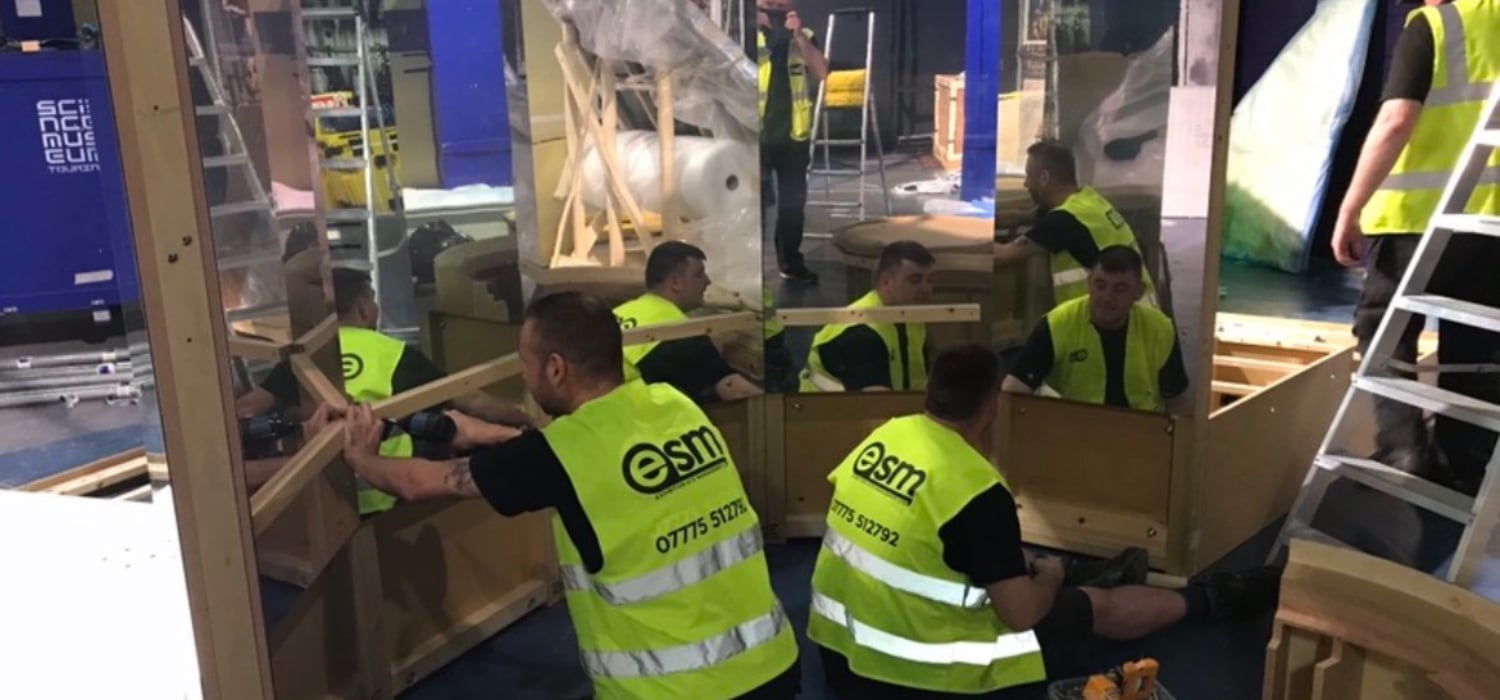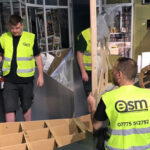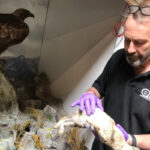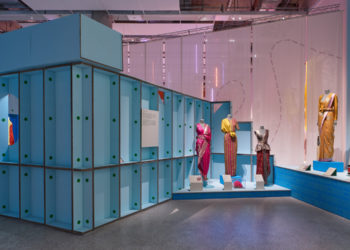Installations and de-installations in host venues can sometimes be somewhat overlooked in the lifecycle of a travelling exhibition. They are actually key moments where the exhibition – its content, displays, collections and message, are passed on from the producer to the host. They are one of the rare moments in the life of an exhibition when many stakeholders from different teams, with different sets of skills, will get together to bring the exhibition to life in a specific venue, and when producers entrust someone else to represent them and their creation with the client. They are a vitally important time to get right, and this has been brought to light particularly by the Covid-19 pandemic context, which has restricted international travel and in-person meetings, and put a strain on planning and collaborations.
As a specialist in touring exhibition installation management, I occasionally get asked by a client to consult on a touring exhibition that they are developing. All exhibitions are unique, and all clients have their own set of priorities, but here are a few general tips that are often worth considering when planning an exhibition for touring, from a technical installation perspective.
The quality of the packing crates is probably the number one factor that affects how well an exhibition will last throughout its touring life.

Bespoke surfaces and finishes
These look amazing, and in the first venue of the tour it can even help the exhibition win awards, as well as attract future host partners. However, they can become damaged easily, and are often impossible to repair and replace, so by venue three or four they can look pretty tired. Proper crates and packing materials and procedures can prolong the life of set works with special surface finishes. Trying to mix some bespoke finishes with some more standardised or hardwearing ones, such as recycled composite or powder-coated metal materials, is also helpful in ensuring the exhibition continues to look fresh throughout its touring life.
Glass or acrylic display cases
In the same way that bespoke finishes can be complex to repair on tour, so can display cases if they are made to unique sizes. If a glass or acrylic panel gets damaged or broken (this usually happens during the transportation and crate-handling phase), then finding a replacement can be very difficult. Standard, off-the-shelf cases are easier to replace, come in a wide range of sizes and shapes, and can always be decorated or partially disguised by clever use of graphics or panels.
Tool kits
A comprehensive tool kit is key. Over the years I have seen toolkits that lack the most basic tools needed, but also toolkits that look like they could service the International Space Station. There is no need to spend large amounts of money on a huge tool kit: just think about the tools that will actually be needed and will frequently be used, as well as the equipment necessary to move and lift set works, as well as any ladders, skates, brooms and painting tools required. Middle-range tools are almost always more than adequate for the job.
Exhibition crates
The quality of the packing crates is probably the number one factor that affects how well an exhibition will last throughout its touring life. It can seem like wasted money, but it really is a worthwhile investment and, with crates, the old saying that ‘you get what you pay for’ definitely holds true. Also having a crate made for tools and equipment can be very useful.
Spare fixings
Fixings – bolts, screws, hinges, machine screws etc – will wear out in time and need replacing. Having a supply of spares in the toolkit will save so much time, particularly if they need replacing when the exhibition is being installed in a country that uses measurements that are different to the ones used for the exhibition development.
Fabrication materials
MDF is a versatile material that can add benefits to the flexibility of the exhibition design. However, it is also heavy, gets damaged easily (especially at the corners), and it is not designed to have screws inserted into it over and over in the same location: it starts to disintegrate. It is worthwhile considering other materials for use in certain areas of an exhibition, such as composite materials, or, in certain circumstances, marine ply.
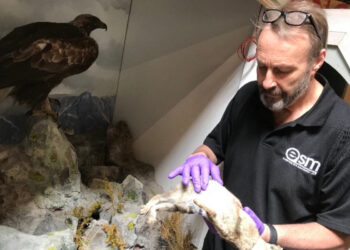
As an installation contractor, it is really helpful to get an opportunity to see the exhibition in its first venue, and be able to get behind the scenes.
Floor adjustments
Flat floors in galleries are never actually flat. Even if it is indicated that a gallery floor is flat, I promise you that I have never installed an exhibition onto a floor surface anywhere in the world that has been totally flat. Designing an exhibition with some kind of ability to adjust height, particularly when two elements of the setworks need to be joined together at specific points, is vital. Adjustable feet are one way of achieving this. In some cases, a recessed shadow gap under which we can hide chocks is another potential solution.
Manuals and plans
The original fabricator of the exhibition should provide their client with a manual of how the exhibition was constructed, as well as instructions on how to clean and maintain it, and a list of suppliers of the main materials used in the exhibition construction (this is usually referred to as an Operations and Maintenance manual). Keeping a copy of this manual with the exhibition when it is on tour, or producing a simple information sheet to give to the host venue after an installation, can help if replacement materials need to be sourced and to ensure that the exhibition is cleaned using products that will not cause damage to the set works and exhibition components. It can also help them to power the exhibition up and down each day in a way that will not damage or shorten the life of the electrical and audiovisual components.
Visiting the exhibition in its first venue
Often, a touring exhibition has its initial showing in the venue belonging to the producer. As an installation contractor, it is really helpful to get an opportunity to see it at this stage, and be able to get behind the scenes, take photos, make notes and ask questions. It also enables the installation contractor to put a realistic quote together for installing it when it is on tour.
Getting the touring installation contractor involved early
I love being asked for ideas and insight during the development of an exhibition: it gives me a chance to share some of the knowledge I have picked up over years of working on exhibitions around the world, it gives the client ideas that can result in a more robust and cost-effective exhibition, and it also means that, if we are contracted to install the exhibition when it is on tour, it will be an easier, smoother installation process for us and the project team.
A continuous dialogue
Overall, one of the key criteria to the success of installations management in touring exhibitions is ongoing and open dialogue between touring stakeholders. One thing that really struck me through this last year is how that dialogue has been maintained and expanded online, with discussion groups, emails and calls, where advice and ideas were shared to overcome difficulties raised by the crisis. I think we need to give ourselves credit for the mutual support and camaraderie we have in our industry, and find some way to celebrate it when we are all fully back up and operating again.

